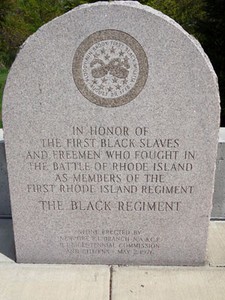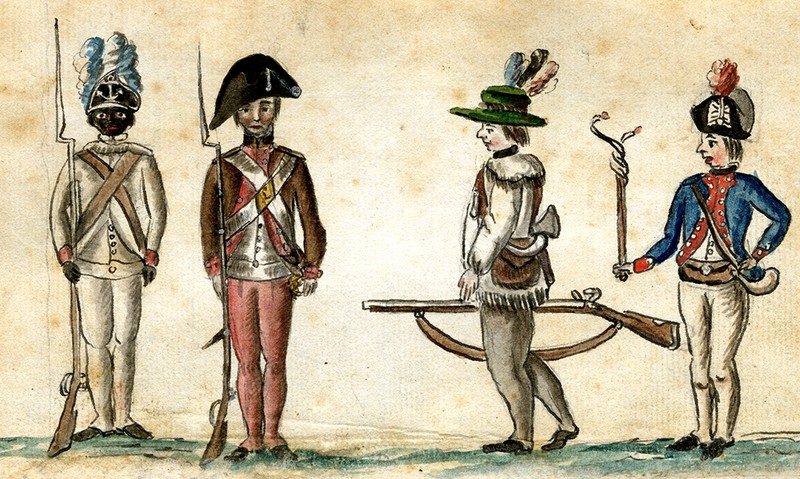Monument to First Rhode Island Regiment
Introduction
Text-to-speech Audio
Images
A picture of the monument.

The flag of The First Rhode Island Regiment.

A painting of The First Rhode Island Regiment.

Backstory and Context
Text-to-speech Audio
In Yorktown Heights, New York, the Monument to the First Rhode Island Regiment serves as a tribute to the efforts of the historic group of soldiers during the Battle of Pine’s Bridge.
Erected in 1982 following support from John H. Harmon, the founder of the Afro-American Cultural Foundation, the monument honors the importance of the regiment on the history of African Americans.
The story of the First Rhode Island Regiment dates back to the beginning of the American Revolution. Prompted to use Black soldiers against the British, future-President George Washington rejected the idea. By the winter of 1777, Washington reconsidered his position, after learning that British General Charles Cornwallis had offered slaves their freedom in exchange for fighting, assuming the British won. Washington then forwarded the idea to the Governor of Rhode Island.
On February 14, 1778, the Rhode Island Assembly voted to allow “every able-bodied negro, mulatto, or Indian man slave in this state to enlist into either of the Continental Battalions being raised.” In doing so, these slaves would be let free. Fearful of ex-slaves being armed, Rhode Island slave owners opposed the law. In June of that year, the Rhode Island Assembly repealed its law, though by then 140 men had been freed by enlisting. The First Rhode Island Regiment had the largest percentage of Black soldiers by a significant amount.
Under the command of Colonel Christopher Greene, the regiment was charged with protecting the northern Westchester lines. On the morning of May 13, 1781, a group of over 200 soldiers, led by infamous British loyalist, James DeLancey, engaged in a surprise attack on the Davenport House, which served as Col. Greene’s headquarters.
Shortly after the attack began, six soldiers were slain, the remaining officers were killed, and Col. Greene was left for dead. DeLancey’s group then made their way to the Griffin House, where they met with the rest of African American soldiers of The First Rhode Island Regiment to announce that Greene was dead and to surrender. The regiment refused, and many of the Black soldiers lost their lives.
The monument was added to the African American Heritage Trail of Westchester County in 2004. It is one of the 13 sites featured on the trail.
Cite This Entry
Steven Keehner on behalf of Westchester County Historical Society and Barbara Davis. "Monument to First Rhode Island Regiment." Clio: Your Guide to History. February 13, 2020. Accessed March 21, 2025. https://theclio.com/tour/2589/7/reverse
Sources
African American Heritage Trail, africanamerican.westchestergov.com. Accessed February 6th 2020. https://africanamerican.westchestergov.com/images/stories/pdfs/Heritagetrailbrochure.pdf.
www.nytimes.com. May 23rd 1982. Accessed February 6th 2020. https://www.nytimes.com/1982/05/23/nyregion/westchester-journal-147698.html.
Partin, Elliot. 1ST RHODE ISLAND REGIMENT, www.Blackpast.org. November 17th 2010. Accessed February 6th 2020. https://www.Blackpast.org/african-american-history/first-rhode-island-regiment/.
Wikipedia
Wikipedia
Blackpast.org

